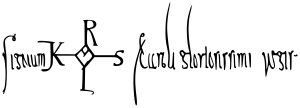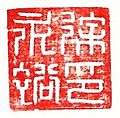Signature facts for kids


A signature is a special way someone writes their name. It shows that they agree with something or have seen it. People often use signatures to sign important papers like a contract (an agreement), a cheque (for money), or a petition (a request signed by many people).
Signatures are unique to each person. They can look different depending on where you live. In many places, a signature is simply your name written in your own handwriting, often in a flowing style called cursive. Sometimes, a signature might be written in a very fancy way that is hard to read. Some people even practice special, hard-to-copy signatures called autographs.
How Signatures Are Used
Signatures are very important for proving who you are. They help to make sure that documents are real and that people agree to what they say. For example, when you buy something big, like a house, you will sign many papers. This signature proves you agree to the purchase.
Signatures are also used for:
- Confirming your identity
- Approving official documents
- Showing you have read something
- Making agreements legally binding
The History of Signatures and Seals
Long ago, before everyone could write, people used other ways to show their approval. Hundreds of years ago, some important people used sealing wax. They would press a special ring, called a signet ring, into the warm wax. This left a unique mark, or "seal," next to their name or instead of a signature.
This is where the saying "seal of approval" comes from. It means something is officially accepted or approved. Even today, some very formal documents still use an official wax seal, like a coat of arms, to show they are real.
Images for kids
See also
 In Spanish: Firma para niños
In Spanish: Firma para niños



